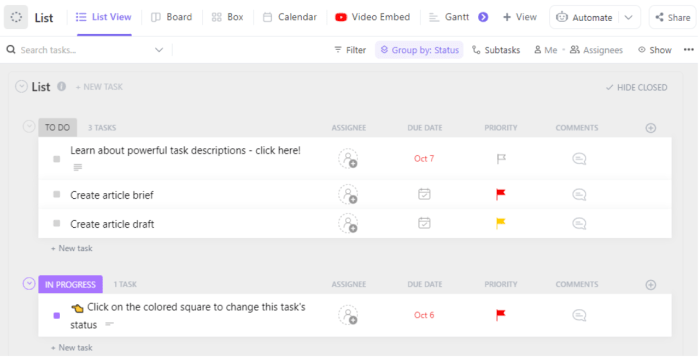Project Management Software for Nonprofits A Guide
Nonprofits are vital in our communities, but managing projects effectively can be tough. Project management software for nonprofits bridges the gap, streamlining operations and maximizing impact. This guide dives deep into the nuances of selecting, implementing, and utilizing this software, focusing on specific needs and challenges unique to the sector.
From choosing the right software to integrating it with existing systems, we’ll cover the essential features, pricing models, and ROI calculations. We’ll also look at crucial elements like user experience and training, and illustrate these points with real-world case studies of successful nonprofit implementations. This isn’t just theory; it’s practical advice to help your organization thrive.
Project Management Software for Nonprofits: A Deep Dive

Nonprofit organizations play a crucial role in our communities, tackling critical issues and driving positive change. Effective project management is essential for these organizations to achieve their goals efficiently and effectively. This guide explores the nuances of project management for nonprofits, highlighting the specific software solutions designed to support their unique needs.
Introduction to Project Management for Nonprofits
Project management in a nonprofit context involves defining, planning, executing, monitoring, and controlling projects to achieve specific objectives while adhering to organizational values and mission. This differs from for-profit project management due to the unique constraints and considerations.
- Unique Challenges: Nonprofits often face resource constraints, volunteer-driven operations, and a focus on social impact alongside project goals. Fundraising, grant management, and community engagement are integral parts of their operations.
- Specific Needs: Nonprofits require project management software that can seamlessly integrate with existing systems, offer robust budget tracking, and prioritize features that support their unique workflows, such as volunteer management, fundraising tracking, and reporting to stakeholders.
- Key Differences:
| Criteria | For-Profit | Nonprofit |
|---|---|---|
| Primary Goal | Profit maximization | Social impact, achieving mission |
| Funding | Revenue from sales and investments | Donations, grants, fundraising |
| Metrics | Financial performance (ROI, revenue) | Social impact metrics (reach, effectiveness) |
| Stakeholders | Investors, shareholders | Donors, volunteers, beneficiaries, community members |
Types of Project Management Software for Nonprofits
Various project management software options cater to the needs of nonprofits. Choosing the right software depends on the organization’s specific requirements and budget.
- Categorization: Software can be categorized by features, pricing models, and integration capabilities.
- Attractive Features: Look for features like task management, communication tools, budget tracking, reporting, and integrations with existing fundraising platforms or CRM systems.
- Pricing Models: Nonprofit-specific pricing models often offer tiered plans or discounts, enabling organizations to select packages that align with their budget.
- Open Source vs. Proprietary: Open-source options provide flexibility and customization but require in-house expertise. Proprietary software offers support and pre-built features, often with a higher cost.
| Software Type | Features |
|---|---|
| Asana | Task management, collaboration, reporting, integrations |
| Trello | Kanban-style task management, visual workflows, collaboration |
| Monday.com | Customizable dashboards, integrations, robust reporting |
Features Essential for Nonprofit Project Management Software
Essential features streamline operations, enhance transparency, and ensure accountability.
- Budget Tracking: Critical for adhering to grant requirements and demonstrating financial accountability.
- Reporting: Allows for tracking progress, measuring impact, and demonstrating value to stakeholders.
- Collaboration Tools: Facilitate communication and collaboration among staff, volunteers, and stakeholders.
| Feature | Importance | Impact on Projects |
|---|---|---|
| Granular Budget Tracking | Critical for compliance | Ensures adherence to grant conditions |

